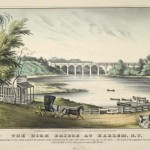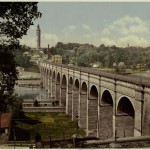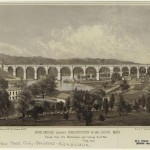I agree strongly with the sentiments expressed in this cartoon, but I can envision a number of different counting methods that share the same problems. In New York City, the authorities do “screenline” counts, where counters are positioned along certain high-traffic bike routes leading to midtown Manhattan. This is great for finding out how many people are traveling to midtown, but in my opinion it is unlikely to lead to improvements to bicycle infrastructure along routes that do not lead to midtown Manhattan. My point being, the city authorities didn’t need to buy a Strava data pack to get data that would have similar biases.
If the goal of cycling promotion is to get people onto bikes, the overall problem with all types of collection of cyclist data trips is that they only measure trips taken by people who are actually cycling during the study period.
My understanding of bicycling promotion market research is that transportation planners devote a great deal of attention to encouraging the “interested but concerned” folks who are not currently riding bikes because they feel it’s not safe. These people’s biking experiences are not going to be reflected in any kind of data collection project because they are not currently biking.
It is very hard to measure trips that would be taken “if only.” If only there was a protected lane. If only there was a dedicated bicycle turn signal. If only there was adequate bike parking. In the meantime, we are left with folks standing on corners with clipboards, or Strava, or self-reported trip logs, or folks counting parked bikes. Rich people will always be better documented because they have the time or the inclination or the technology to log their trips in machine-readable ways, and because other rich people will prefer to do their counting in places they are familiar with and that boast a high density of cyclists. I have never seen anyone standing on the corner of Morris Ave and East 167th St counting bikes.
Bearing this bias in mind, let’s consider the contributions made by the (unfairly maligned) strong and youthful cyclist. I am no longer, I’m afraid, one of them. This usually male population is perhaps overlooked by us advocates, who constantly remind each other that what is important is to get women to ride.
But the argument that these riders are not bellwethers for the wave of family bicyclists is an argument for half measures. Lacking fear, they take the most direct route to their destination. If those direct routes were outfitted with bicycle infrastructure, then families on bikes would be using them as well. The platitude usually offered in place of a solution, however, is that families on bikes want scenic, quiet routes, or “true 8-80 facilities (greenways, protected lanes, and neighborhood greenways)”. Leaving aside the question of just how quiet a route you can get between two busy places in the big city, I feel that this stated preference directs family bicyclists along long, meandering routes that do not provide direct trips between point A and point B.
For instance, if I ride to Upper Manhattan from Brush Avenue and the Bruckner Expressway service road along the Hutchinson and Pelham Parkways, I get a five- or six-mile ride without cross traffic, but with unpleasant highway noises and smells, with poor pavement, and with a long detour out to the east to link up with Pelham Parkway. Then there’s the loop north around the Zoo and Botanic Garden (both of which are located in parks). It takes more than 65 minutes to get home, which is about 30 minutes more than it takes along Westchester Avenue, Home Street, and East 167th Street. I don’t have the time to waste on such an out-of-the-way routing.
Similarly, improving greenways and byways with the intent to make them even more attractive to family bicyclists is a project that is doomed to half-successes. Going out of the way will always take more time than traveling directly. The local bike-train leaves at 7:50 am and arrives at 9 downtown; hard cheese for parents who have to drop off their kid at a day care that opens at 8. Fixing the giant sinkhole on the Greenway and adding lights along the way will not make it decently quicker to get downtown.
It seems to me that better, more functional onstreet routes would improve bicycling in New York City. Such a plan would build on the city’s existing grid, which is an excellent design for bicycling access, as it means that bicycle traffic can sift through onto less well-traveled streets instead of being confined to several busy arterials. Small improvements would make grid travel better for bicycles, such as: daylighting at busy corners; bicycle traffic signals and “green waves,” which time traffic lights for a speed that bicycles can handle; creating plazas instead of wyes where streets go diagonally; left-turn restrictions along one-way avenues to keep turning traffic from crossing bicycle lanes; and chicanes and neckdowns to slow through motor traffic.



